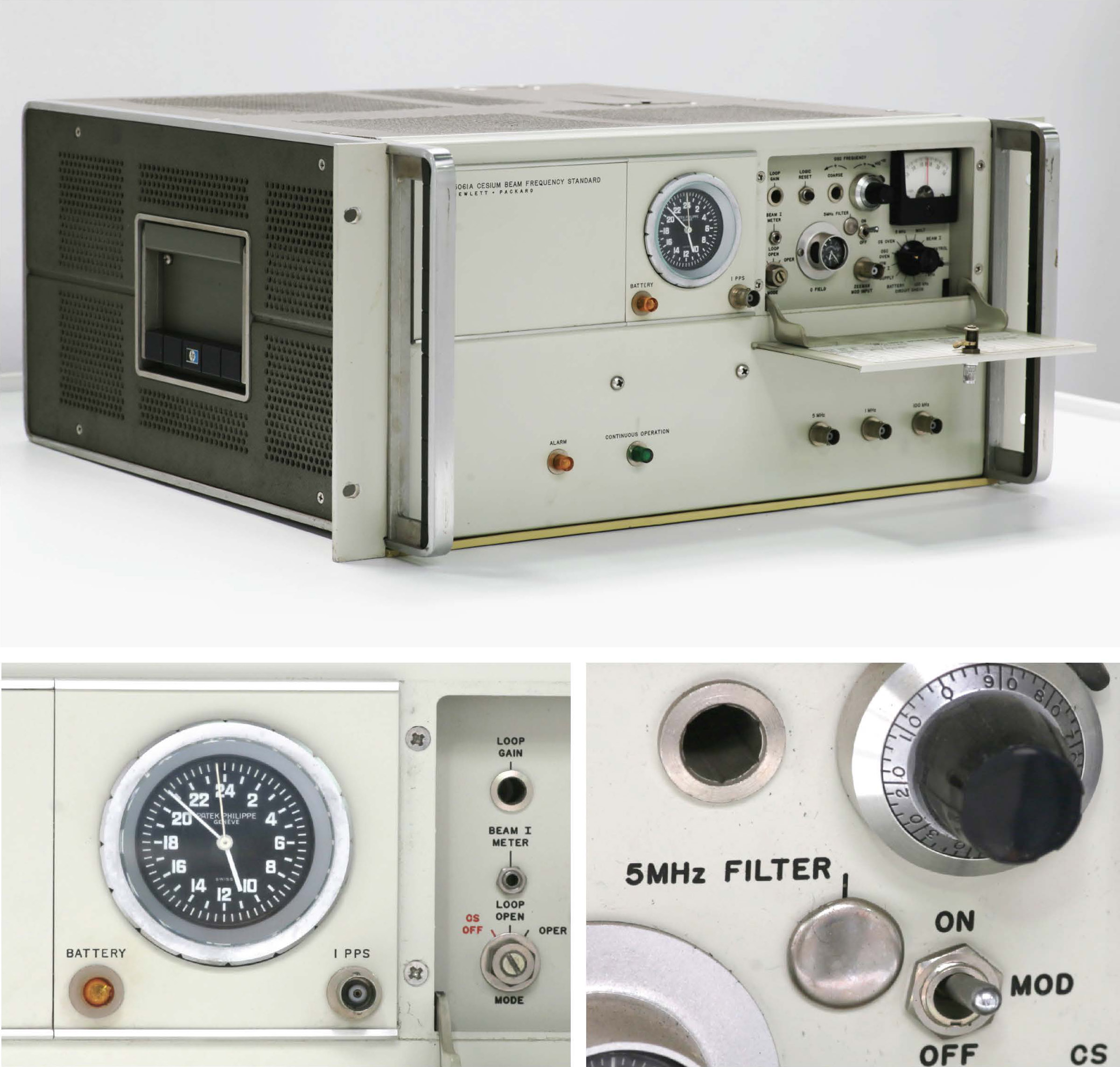9,192,631,770 Periods
Caesium time and frequency standard HP 5061A
Manufacturer: Hewlett Packard
Place and time of production: USA, 1977
Dimensions (cm): 42.5 (48.5) . 46.7 . 22.1
Inventory number: Т:6.348
Atomic clocks are designed and constructed as precise sources of the unit of time, the second. The second is one of the main physical units in the International System of Units (SI). In 1967, it was defined as “the duration of 9,192,631,770 periods of the radiation corresponding to the transition between the two hyperfine levels of the ground state of the caesium 133 atom”. The clock’s operating principle is based on the property of Caesium to emit radiation in extremely precise time intervals. Directorate of Measures and Precious Metals put it in operation in 1978, as the official time standard in Serbia.
Since 1972, Coordinated Universal Time (UTC), managed by the International Bureau of Weights and Measures (BIPM) in Paris, is acknowledged as the official international time. This time scale is based on the International Atomic Time (TAI), calculated based on the data from more than 400 clocks. The data is sent by over 70 laboratories in the world, including the laboratory of the Republic of Serbia since 2006.
Directorate of Measures and Precious Metals of the Republic of Serbia donated Caesium standard to the Museum in 2018, after the device was replaced with a more modern one.



